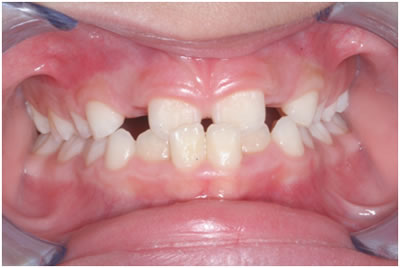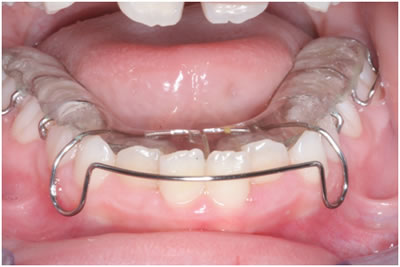Preventive and Interceptive Orthodontics

1. What is Orthodontics?
Orthodontics is a specialty in dentistry that concerned with prevention, interception & correction of the growing and mature Dentofacial structures. (Dentofacial structures are teeth, jaws, & surrounding facial bones).
2. What is Preventive Orthodontics?
It allows the dentist to prevent or eliminate irregularities & malposition of the teeth in the developing dentition.
It includes:
- Prevention of primary tooth loss due to caries.
- Usage of space maintainer to save space for permanent tooth eruption.
- Correction of oral habits leading to damage of permanent dentition.
- Early detection of genetic & congenital anomalies.
- Natural exfoliation of primary teeth (because retained teeth lead to impaction or malposition of permanent teeth).
3. What is Interceptive Orthodontics?
It allows the dentist to intercede or correct problems as they are developing. Early recognition of developing malocclusions and the potential for uncomplicated orthodontic treatment procedures can minimize or eliminate future costly treatment.
It includes:
- Removal of primary teeth that contribute to malalignment of permanent teeth.
- Correction of cross bite.
- Correction of jaw size discrepancy by fixed or removable appliance.
- Extraction of primary or permanent teeth to correct overcrowding.
- Redirection of ectopically (abnormal eruption of a permanent tooth)
erupting teeth.
4. What are the advantages of interceptive treatment?
Some of the most direct results of interceptive treatment are:
- Creating room for crowded, erupting teeth
- Creating facial symmetry through influencing jaw growth
- Reducing the risk of trauma to protruding front teeth
- Preserving space for unerupted teeth
- Reducing the need for tooth removal
- Reducing treatment time with braces
- Swallow pattern correction due to a history of thumb sucking or tongue thrust
- Airway evaluation to correct snoring and sleep apnea

5. When is the ideal time for the initial orthodontic evaluation?
The American Association of Orthodontists recommends that the initial orthodontic evaluation should occur at the first sign of orthodontic problems or no later than age 7. This is commonly the age where molars begin to erupt, which determine the front-to-back and the side- to-side tooth relationships. Early evaluation provides both timely detection of problems and greater opportunity for more effective treatment. When orthodontic intervention is not necessary, a pediatric dentist or orthodontist can carefully monitor growth and development and begin treatment when it is ideal.
Sources
Bell RA, Dean JA, McDonald RE, Avery DR. Managing the developing occlusion. In: Dean JA, Avery DR, McDonald RE. Dentistry for the child and adolescent. St. Louis, Mosby Elsevier, 9th ed., 2011, p: 550-613.
Mathewson R, Primosch R. Guidance of the developing occlusion. In: Fundamentals of pediatric dentistry. Quintessence Publishing, Co, Inc. 1995. P:352-371.





